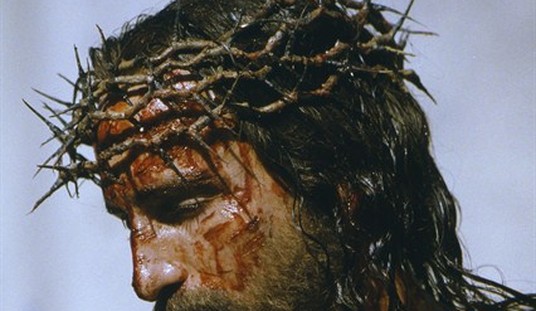Soccer is the world’s most popular sport, as we are told every time some bored sportswriter dusts off their collegiate freshman globalization mantra handbook and pens yet another stirring op-ed decrying its status, or lack thereof, within our golden shores. You just don’t understand the beautiful game, comes the cry against those among us who 1) still watch sports of any kind period 2) would rather watch baseball or football or hockey or basketball or tiddlywinks, preferably not involving one spending a few decades altogether too close for comfort. (Side note: I actually like watching soccer, although given how my team is the San Jose Earthquakes said enjoyment has been quite subdued lately. But I digress.)
We at the Good Pirate Ship RedState have heard the cries of those devastatingly afflicted with soul-crushing grief over soccer’s relative lack of popularity in our great land — both of you — and are here to help. What, you think all we do all day is mercilessly jab at the follies and foibles of the woke agenda and its ruinous policies? Perish the thought! And so, without further ado, we present to you a handy guideline to soccer so the next time the subject is broached you can speak with authoritative authority. You’re welcome.
Soccer as a game has been around ever since … well, sometime in the nineteenth century as near as anyone can tell. At least officially, with rules and stuff. It started in England, and much like the British Empire at the time, rapidly encircled the globe as people discovered the joys of a participation sport requiring little equipment save a ball, a field to run up and down on, perhaps a couple of nets at either end so you wouldn’t have to retrieve the ball after a goal from the nearest swamp, and maybe some shoes just in case the field was a reclaimed cow pasture.
The objective of soccer is to score a goal, preferably by kicking the ball into the other team’s goal. If you kick the ball into your team’s goal it is scored as a goal for the other team, this causing much embarrassment to the player who did so as they collapse to the ground in agony at the shame, the humiliation, and the knowledge they will be buying all of their teammates’ beer for the next three weeks.
Soccer is played with eleven players per side. There is the goaltender, who wears a different color jersey so he won’t be readily identifiable as a member of your team should he let in an easily stoppable shot. And there’s everyone else. Each player has a specific position, which is immediately ignored the moment the game starts as everyone pretty much does whatever they want. Some players like to try and advance the ball toward the other team’s goal. Some like to try and make this process as difficult as possible. And then there’s Carl, who insists he’s keeping up the defensive side of things whenever his team has the ball near the opponent’s goal but is curiously positioned near the hot dog vendor the entire time.
Since soccer is of European origin, the sport is governed by rules of fair play, equity, and anything possible to avoid having to put large numbers on the scoreboard. For example, whereas in hockey you have the breakaway, where it’s skater versus goalie and may the best player win, in soccer you can’t simply run ahead of everyone else to get a clear shot at goal. Instead, you have to wait until Carl wipes the mustard off his mouth and gets back in position somewhere in front of his goal, then don’t run past him. You can kick it past him. Just don’t get behind him. We don’t want to embarrass Carl. He does that well enough on his own.
Soccer is a timed game, with two halves of forty-five minutes duration. Or longer. In soccer, unlike every other timed sport in which the clock is stopped when there’s a stoppage in play, the clock keeps running no matter what. Then, at the end of each half, the game officials consult their Magic 8-Ball and from it determine about how many minutes worth of extra time should be added on. This is to avoid mortifying situations such as the St. Cleve Calamity of 1902, when a novice timekeeper under the false impression that he was to stop the clock during periods of inactivity on the field did just that, the game thus lasting seventeen hours.
In soccer, only the goaltender is allowed to touch the ball with his or her hands. Everyone else is prohibited from using anything from shoulder to fingertip to touch the ball. The preferred method of moving the ball is kicking. Occasionally, a player will bounce the ball off of his or her head in order to make it go in the desired direction. This is called a header. Or, if done improperly, a concussion.
A player on defense will often try to strip the ball from a player on offense, or a player who’s just plain offensive. This involves trying to either step in-between the ball and the feet of the player who has possession, or sliding at the ball in order to kick it away from the player who has possession. In either case, the player who had possession is required by international law to immediately fall down and writhe in agony much like one who is possessed. This continues until either the player who went after the ball is called for a foul, or no one buys the act of the mortally wounded player at which time he or she will miraculously heal and get back up.
There are different levels of transgression in soccer. Some are verbal warnings, and usually result in the other team getting the ball. Severe sins result in the offending player being shown a yellow card by the referee. If a player is shown two yellow cards in a game they are ejected from the proceedings. This is also the case if a player really crosses the line and gets shown a red card. Should a player be thus excused from the remainder of the game, his or her team will play said remainder with only ten players on the field. This is called peer pressure, as the ejected player is not going to be looked upon with favor by his or her teammates. The only exception to this rule is if you’re on a team with Carl, in which case playing one player short is pretty much standard operational procedure.
Soccer has one thing in common with baseball, that being if a player is substituted for, the player cannot re-enter the game. This rule is to keep teams from giving all their best players a rest, then reinserting them late in the contest. Or it’s because there aren’t enough shower stalls in the locker room, so some players will have to start early. Which with the insane amount of money there is in international soccer one would think wouldn’t be a problem, but it persists anyway.
And there you have it; one quick and easy guide to soccer. You are now completely set to watch, with knowledge, the Euro 2020 tournament (it’s called Euro 2020 because the tournament organizers never bothered to buy new calendars). Or the Copa America tournament. Or head down to the Copacabana to see if Lola is still hanging around. Your call.














Join the conversation as a VIP Member